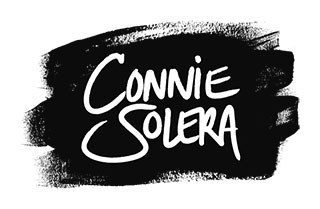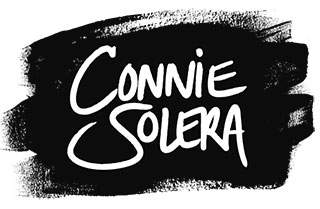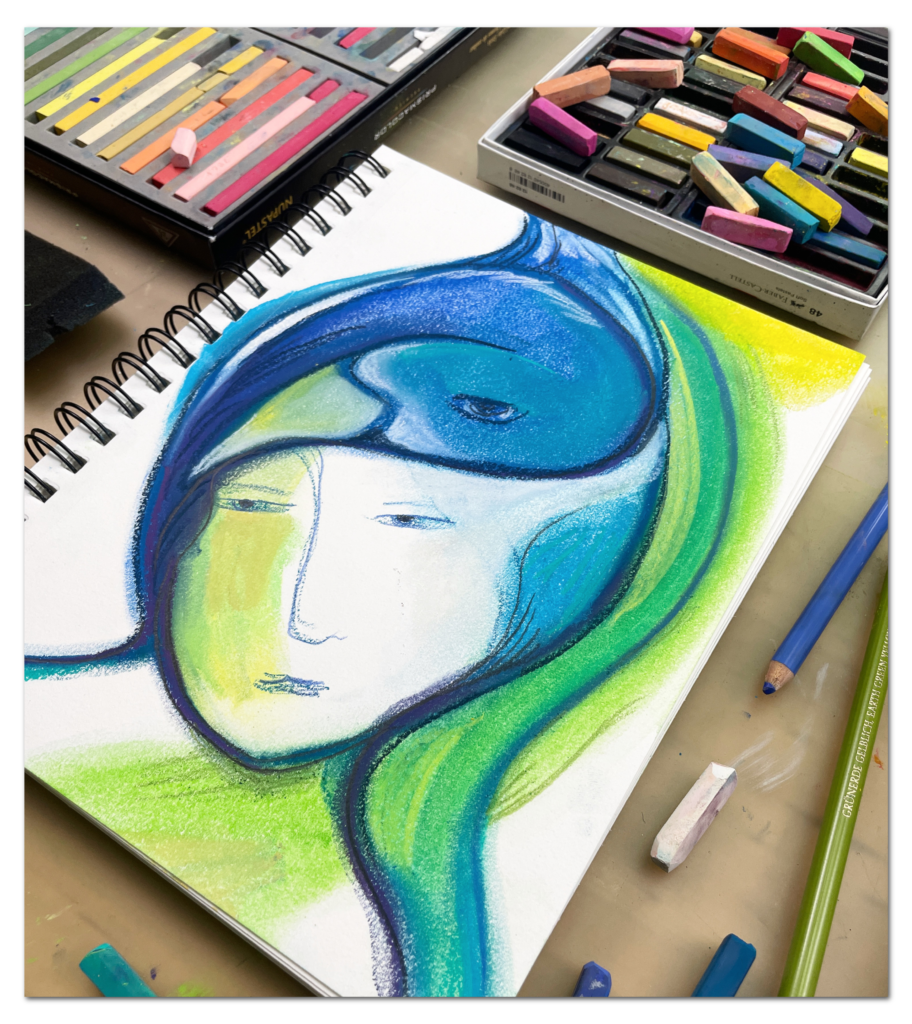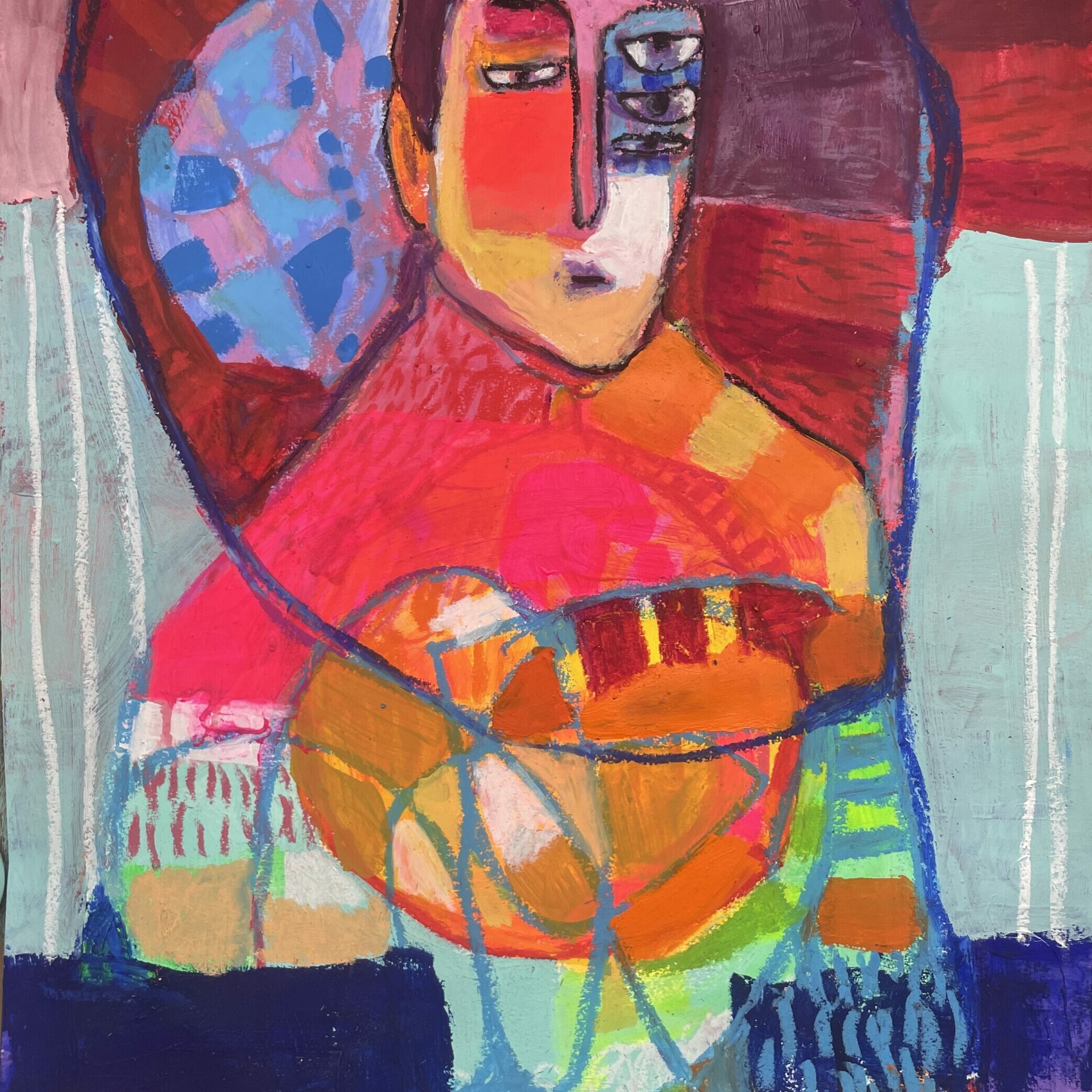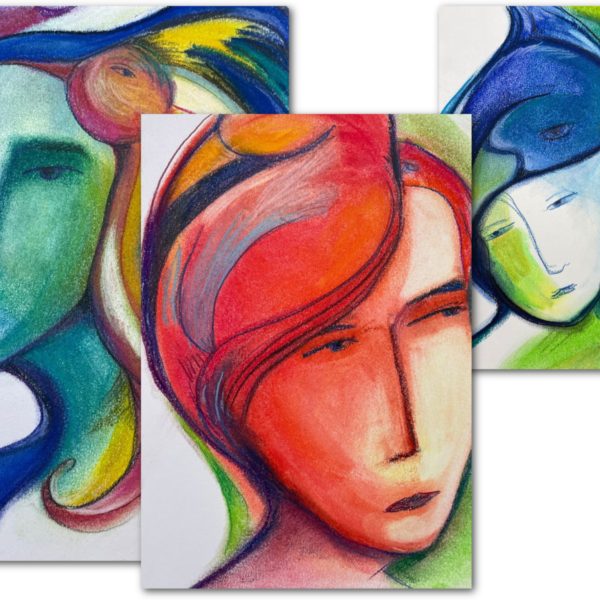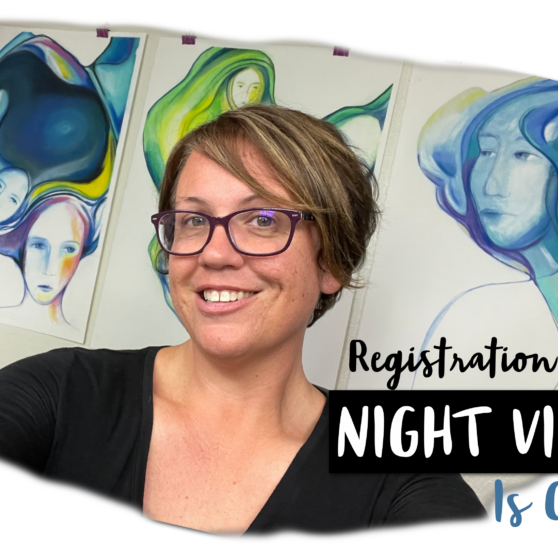My Secret To Very Little Pastel Dust
Published on March 17, 2021
So yes, it’s true, these little chalky blocks of pigment bliss can get dusty.
I think that’s one of the main reasons why for the longest time I wasn’t a big fan of soft pastels.
But ever since I started my Night Vision body of work in 2020 I’ve been gaga over them.
Recently I noticed that the dust is to a minimum because of one important thing: I work slowly.
Soft pastels have this amazing way of helping me tap into a different part of my creativity that paint, oil pastels, ink, and many of the other materials I absolutely love just can’t do.
All because I gotta slow-the-f-down to experience their magic.

You know me! When it comes to painting I’m all about layers.
There’s nothing more exciting to me than to smear paint all over something and move in an entirely new direction. I love that — can you hear me purring!?!
But with soft pastels you can’t play that same game or you’ll end up with mud cakes…or even worse…heaps and heaps of pastel dust.

With soft pastels you gotta lay a color down seductively and then smudge like you mean it.
When you do so, you eliminate a huge amount of dust from flying everywhere because instead you are gently working it in and across your substrate.
Of course, if you’re sensitive to dust, by all means take care of YOU. Wearing a mask or choosing a pastel that’s a bit more harder like Faber Castell polychromos pastels will probably do the trick.
Though…if you’ve stayed away from soft pastels because the dust seems like too much of a hassle…I want to invite you to join the Slow-The-F-Down club and go gaga over soft pastels with me!
Come join me and fellow smudgers in Night Vision — we start Friday.
CLICK HERE FOR MORE INFO
Join The Paint Wisdom Newsletter!
My weekly newsletter is filled with studio updates,
announcements,& short musings intended to nourish your Artist Soul.
